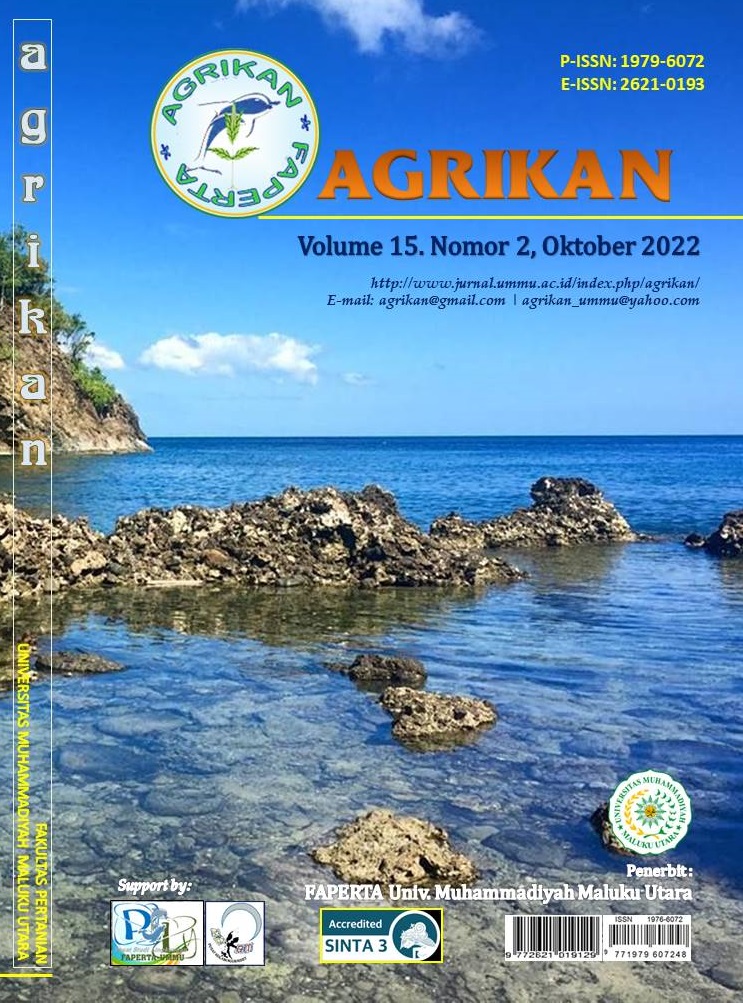Proximate Composition and Hedonic Acceptance of Commercial Malingping Fishball
DOI:
https://doi.org/10.52046/agrikan.v15i2.1398Keywords:
Bakso Ikan, Ikan Giking, Ikan TenggiriAbstract
Fish balls are a popular food and are very popular with the general public, this is the main attraction for fish balls, fish balls have an advantage because they contain a protein content of 21.61%. Making fish balls is made by mixing tapioca flour with ground fish meat and adding spices and crushed ice cubes, tapioca is also added to the meatballs as a filler. The results of the organoleptic tests on the three types of fish meatballs showed that the average appearance results in F1 (6.47), F2 (5.60), and F3 6.47). The average odor results on F1 (7), F2 (6.53), and F3 (6.47). The average taste results on F1 (6.4), F2 (7.6), and F3 (8.07). The average yield of textures F1 (6.27), F2 (6.93), and F3 (7). As for the proximate analysis, the percentage results obtained from each test were the results of the moisture content test F1 (26.89%), F2 (39.54%), and F3 (33.78%). The results of the ash content test were F1 (1.46%), F2 (0.82%), and F3 (0.81%). Test results for protein content of F1 (9.99%), F2 (10.34%), and F3 (8.52%). The results of the fat content test were F1 (0.42%), F2 (0.52%), and F3 (0.44%). The test results for the levels of carbohydrates F1 (61.24%), F2 (48.78%), F3 (56.45%). The Ceu Bai malingping fish meatballs the most liked of the panelists taste
Downloads
Published
Issue
Section
License
Copyright (c) 2022 Faiz Furqon Zulkarnaen Alhaq, Sakinah Haryati, Dini Surilayani, Aris Munandar

This work is licensed under a Creative Commons Attribution 4.0 International License.

This work is licensed under a Creative Commons Attribution 4.0 International License.













